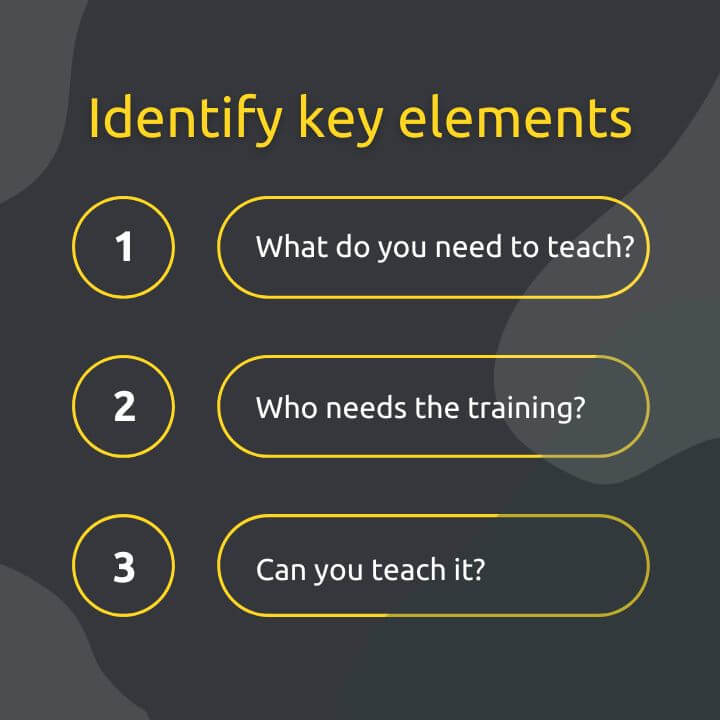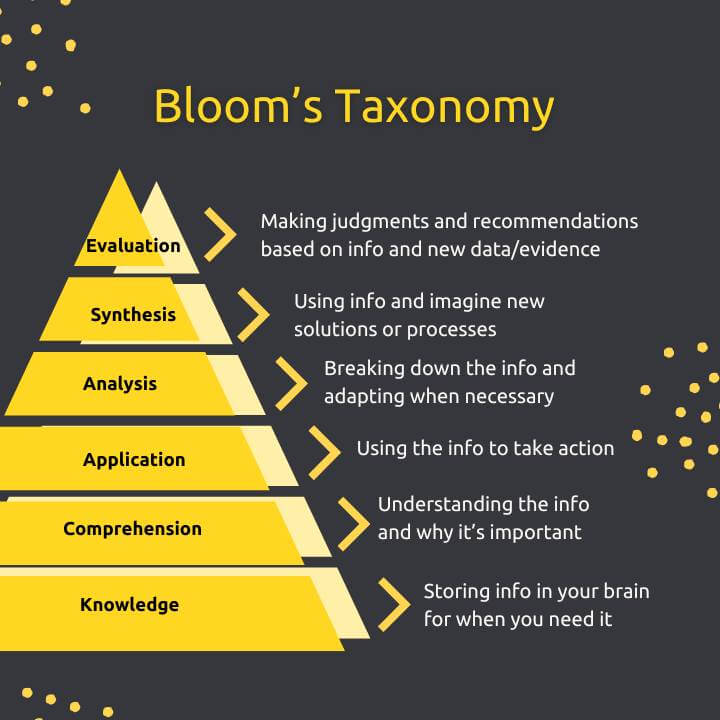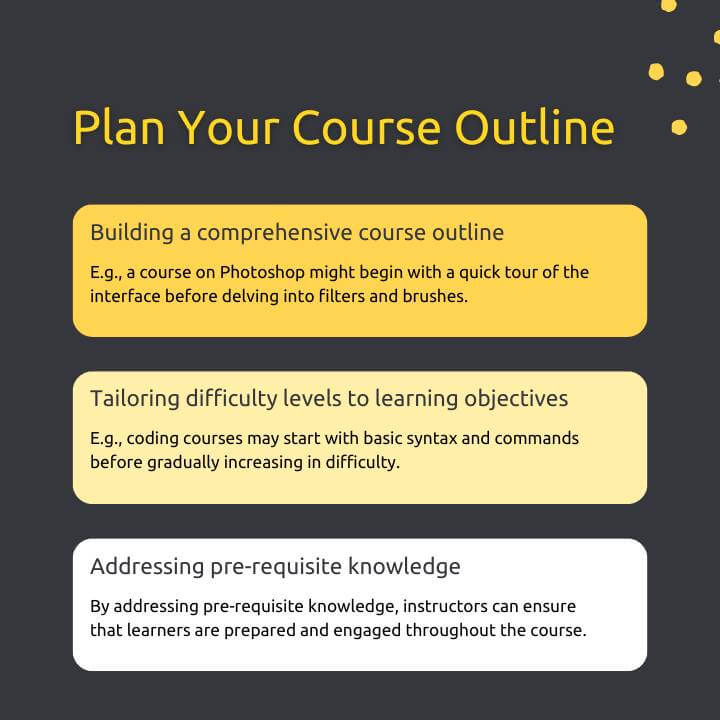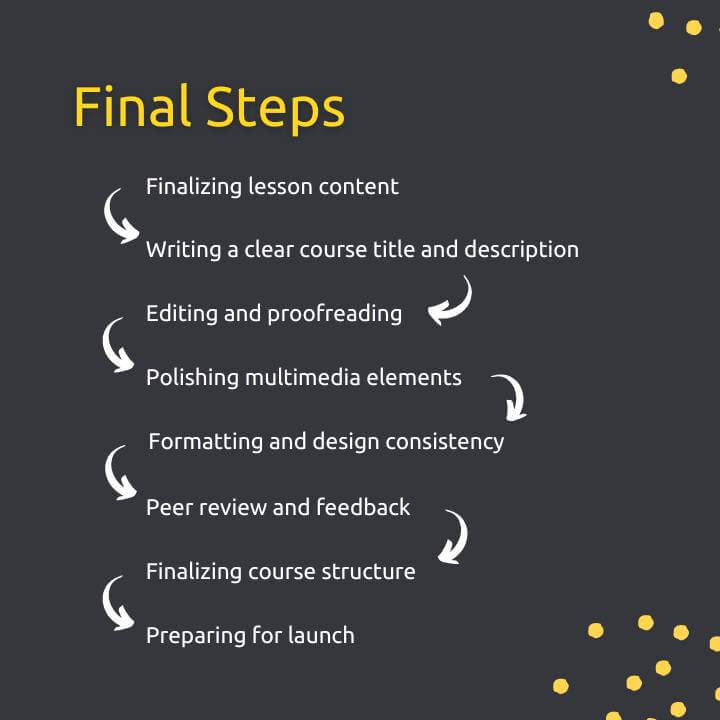If you’re handling employee training and development and are trying to figure out how to create your own training course – this guide is for you! We will cover how you can develop an online training course to meet the needs of your employees and organization, the best ways to develop content, and choose the best format and structure for your course.
Finally, we’ll address how you can actually create the course, whether you teach it yourself or work with a subject matter expert. Training courses can empower your team and improve processes within your company. So let’s dive in!
Identify the right path for your course
Investing in training for your teams and colleagues is critical to the success of your business. Effective training enables individuals to learn new skills or refresh existing ones and empowers them to apply these skills to benefit the company and its customers.
It reinforces their abilities and expands their problem-solving options, thus extending the longevity of your workforce and advancing the careers of each individual. If you're convinced of the importance of training, your next step is to ask yourself: What kind of training should I develop?
Learn more:
-
9 Instructional Design Principles
-
Designing Courses to Skyrocket Employee Development
-
How to Create a Winning Employee Development Plan
Identify key elements

Element 1: What do you need to teach?
A specific problem. To create powerful training that makes a significant impact, it's vital to identify a specific and pressing problem that you or your team is facing. Determine the key metric you want to improve and develop training that will provide a solution to this issue. Whether it's streamlining a lengthy process, enhancing knowledge and work quality, or reducing support requests, your training should offer an effective remedy.
A comprehensive program. Offering a single training course is just the beginning. To solve your problems completely, you'll likely need to provide a comprehensive learning program. As your team gets more proficient with new apps or solutions, some may need additional training to acquire more advanced skills or learn new tactics.
Your training should be captivating and relevant, providing your audience with valuable skills and knowledge that they can immediately apply to their work. The answer to "What's in it for me?" should be undeniable.
Element 2: Who needs the training?
Identify your audience. Which employees will take action based on the course(s) you produce? Knowing your audience will help you create the right content using the best formats: instructional video with screen recording, text, PDF checklists, downloadable guides, mobile-friendly content; you name it. And ideally, this training will be relevant for many people in the future. It usually doesn’t make sense to invest lots of time and money to create a course that only one or two people will take.
Element 3: Can you teach it?
Can you or someone else on your team teach the required information? Do you have enough knowledge? Can you spare the time? The answers will determine whether you or a teammate teaches the course or if you need to work with someone else to create it.
By considering these questions, you can begin to see a path for developing your training. Focusing on the topics you need to teach and understanding your audience helps you determine how big of a need this training is. And if you know your capacity, you’ll know if developing a course can be done in-house or if you’ll need the help of some additional experts. Keep these ideas in mind as we continue through this guide.
Learn more:
Identify learning objectives
When it comes to training courses, they’re not all created equal. Ensure that the course you create or provide matches the needs of your audience. This is why learning objectives are essential.
Learning objectives play a critical role in creating effective training courses that meet the needs of your audience. They provide a clear statement of the focus and scope of the course or lesson and help learners understand what they'll be able to do on their own after completing the training. Here's what you need to know:
What is a learning objective?
A learning objective is a concise statement that identifies the specific concept or skill that a learner will acquire through the course or lesson. For instance, "In this lesson, you'll learn how to create an account on our website by following easy-to-understand steps." Learning objectives help learners understand what they will learn, why it's important, and how they can apply it.
Creating learning objectives
For each lesson, identify one specific learning objective that will be reflected in the lesson title.
For an entire course, aim for 3 to 5 course-wide learning objectives. These objectives should guide the development of the course and be reflected in statements made at the beginning of the course or lesson.
What happens if you don’t have learning objectives?
- Without learning objectives, learners may not understand why a certain topic is being taught, even if the information is interesting. By setting clear learning objectives, learners know what to expect, and creators can ensure that their content meets specific goals.
- Learning objectives keep the focus on the essentials, helping creators to avoid including irrelevant material. Streamlining the course this way ensures that learners can concentrate on what they need to know and helps them avoid wasting their time.
How to create learning objectives
Remind yourself why you’re creating a course in the first place - what goals are you trying to achieve, and how will your audience benefit? The new skill or knowledge they receive is at the core of your learning objectives.

A useful tool that can help you create learning objectives is Bloom’s Taxonomy. The basic idea of Bloom's Taxonomy method is to identify the different levels of critical thinking and understanding learners can achieve. As someone levels up in their knowledge, they unlock a deeper understanding of concepts and can use them, adapt them, and make them their own.
Additionally, all learning objectives should follow the SMART model:
- Specific
- Measurable
- Attainable
- Relevant
- Timely
Let’s look at an example with this course description for an online Algebra course:
In this course, we will introduce students to the world of Algebra through expressions and equations. Students will evaluate algebraic expressions, solve linear equations, and graph them. We will also steer students through various real-world scenarios with an emphasis on using basic statistics to interpret the information given and found.
This description does a great job of setting helpful expectations by explaining the learning objectives:
- Learners will be taught specific kinds of knowledge.
- They’ll be asked to work through those on their own.
- They’ll see how to connect the concepts to real-world scenarios so they can apply what they’ve learned.
So, through the use of learning objectives, you can help your audience understand what they will learn - and the value of all that knowledge - and you can also help yourself by setting a scope for the course development to come.
Optimize your course for the best results
When developing a training course, it is essential to provide learners with all the necessary information they need while giving them ample opportunities to practice and create something new by the end. Successful courses will balance the amount of information delivered with the chances for learners to apply that knowledge.
Organizing content
Outline the key steps. When teaching a process or system, outlining the key steps is crucial. It is essential to break down complex steps into easy-to-understand ones and consider the best way to explain each step visually. For example, adding screenshots for specific steps may improve learners' ability to remember where something is and repeat that action on their own.
Start with the basics. If you’re introducing the learner to a new platform, take a similar approach: explain the basics before you dig into deeper features and other options. Aim to show the menu structure and key features first. Give learners the lay of the land so they can learn to navigate on their own.
Here's an example: In a Microsoft Excel course, you wouldn’t teach every function before the learner has a chance to open their first spreadsheet. Explain a few functions and let the user try them out. By exploring and getting familiar with what’s just been taught, users gain confidence and will hunger for whatever’s next in the training.
Keeping your audience focused
It's crucial to focus on the information your audience needs to know and provide short, direct instructions and information. Adding too much detail or background information may confuse them. Learners need opportunities to pause, consider what they just saw, and then apply what they have learned.
Use examples whenever possible. Choose scenarios and stories that are easy to relate to, especially within your company/industry.
Courses should not be entirely front-loaded with information.
It is essential to provide a balance between passive and active learning. Instead of hour-long videos with no breaks, consider 5-minute videos with tasks in between – something we like to call “bite-sized lessons.”
If your audience is learning as a group, give them questions to discuss or problems to consider together.
Letting learners apply their knowledge
Building in breaks provides learners with to play with or exercises to complete, and quizzes can generally help with learning retention. These opportunities can help learners personalize new knowledge and apply it on their own.
Effective training courses provide learners with the necessary information and opportunities to apply that knowledge. Organizing content in a logical way, keeping learners engaged, and balancing passive and active learning is crucial. Finally, providing learners with opportunities to apply what they learned helps to reinforce the new information.
Learn more:
-
Content Chunking Tips to Improve Memory Retention
-
What is Microlearning: Examples to Effectively Train Your Team
-
6 Steps for Effective Elearning Design
Plan your course outline

Building a comprehensive course outline
What is the learning journey? To create an engaging course, instructors need to develop a comprehensive course outline that takes learners on a journey from start to finish. This roadmap should address each learning objective and cover the necessary topics in a reasonable, expected amount of time. For instance, a course on Excel might begin with a quick tour of the interface before delving into functions.
Tailoring difficulty levels to learning objectives
What is the appropriate level of difficulty? Instructors should tailor the difficulty level to the learning objectives to ensure that learners remain engaged and challenged throughout the course. For example, coding courses may start with basic syntax and commands before gradually increasing in difficulty, culminating in a final project that requires learners to integrate all the pieces they've learned.
Addressing pre-requisite knowledge
How much do your learners already know? Not all courses are created equal, and some assume a certain level of knowledge from the learner. Instructors can save time by clarifying any pre-requisite knowledge to the learner, such as requiring prior experience with a coding language before enrolling in an advanced course. By addressing pre-requisite knowledge, instructors can ensure that learners are prepared and engaged throughout the course.
Produce your course

Choosing the right format for your course
- Preparing your outline should begin to give you ideas about what form your course will take. But building a course is like preparing a tasty dish: there are many ways to cook them up.
- Consider the different formats you can use to engage your learners, such as videos, text paragraphs, slides, images, and animations.
- Mix up formats if possible to keep your learners engaged and interested in your course.
Making a list of production requirements
- To help you produce the course, make a note of how each lesson should be produced. You’ll need the right tools and expertise to generate screen recordings, edit video, and audio, and create animations if you need all those elements.
- Make a list of what you need for each lesson, and share those requirements with the different people helping you produce the course.
- Planning what’s needed for each lesson will save you time in the long run and help you plan which tools you’ll need to use.
Creating consistent course materials
- Course materials should look and feel consistent. Videos and other visual elements should feel like they all belong together.
- Use design templates and specific color palettes to maintain consistency.
- Use the same fonts for text throughout the course and the same colors for backgrounds, text, sidebars, highlights, and any other on-screen elements you use.
Reviewing and testing your course
- Before the course goes live, you always want to ensure everything looks and sounds as good as possible.
- Build in periodic checks along the way, or a round of QA after all the lesson pieces are assembled.
- If someone else is producing lesson elements, make sure you have a chance to review them as well.
Tweaking your outline along the way
- Ultimately, the goal will be to end up with a collection of lessons and materials to satisfy your learning objectives.
- Be prepared to make changes to your outline along the way to match those objectives better.
- Your outline is a guide, but the final lessons and materials will matter most to the learner.
Learn more:
The final steps for publishing your course

Once you have completed the initial stages of creating and refining your course, it's time to hit the ground running and focus on the final steps of publishing! Don’t be overwhelmed by the final stages; you’re nearly there.
Finalizing lesson content
Review each lesson in your course to make sure that the content aligns with your learning objectives. Make any necessary revisions or updates to ensure the lessons are comprehensive, accurate, and engaging.
Writing a clear course title and description
Simply putting the course out there does not guarantee anyone will take it, let alone use all the valuable information you’ve included. Give your course a clear title and description that clarifies what it will cover, who it’s for, and the benefits it includes.
Use straightforward language to explain "what's in it for me" for your learners. Clearly state the course’s benefits, the difficulty level, who it's for, the tools needed, and what the learners will be able to do by the end.
Example of a good course description
GoSkills offers a course on Financial Modeling Basics, and you can find the description below:
Financial modeling in Excel is extremely useful to forecast and make key decisions about your company's performance. This financial modeling training online is designed for beginners to give you a solid foundation in the preparation needed before you build a financial model. You will learn the necessary concepts, functions, and features required to structure and design your financial model to maximize usability and minimize risk. Examples are provided throughout the course so that you can apply the practical knowledge you learn through hands-on application in Excel.
The title and description include:
- The benefits of the course
- The level of difficulty of the course
- Who it’s for
- What tools do you need
- What you’ll be able to do by the end
Editing and proofreading
Thoroughly edit and proofread all written materials, including text paragraphs, slides, and accompanying documents. Check for grammatical errors, spelling mistakes, and inconsistencies. Pay attention to the formatting and organization of the content to ensure it is easy to follow and understand.
Polishing multimedia elements
If your course includes multimedia elements like videos, animations, or images, make sure that they are of high quality. Multimedia exists to enhance the learning experience. Test these elements on different devices and platforms to ensure compatibility and optimal performance.
Formatting and design consistency
It’s important to maintain a consistent visual style throughout your course materials. Use templates, color palettes, fonts, and formatting guidelines to ensure a cohesive look and feel. This will help learners navigate the course easily and creates a professional and polished appearance.
Peer review and feedback
Help fix your blind spots! Get feedback from trusted colleagues, subject matter experts, or beta testers who can review your course content and provide helpful insights. You can incorporate their suggestions and address any concerns or areas for improvement. These perspectives can help refine your course and make it more impactful.
Finalizing course structure
Revisit your outline and compare it to the final lessons and materials you have created. Make any necessary adjustments to ensure that your outline accurately reflects your course's content and learning objectives. Your outline should serve as a comprehensive guide for learners, leading them through the course logically and effectively.
Preparing for launch
Once you have completed all the necessary steps, you are ready to prepare for the official launch of your course. Consider creating a marketing strategy to generate awareness and interest. Set a launch date and communicate it to potential learners through channels like your website, social media, or email newsletters. Prepare any additional resources or support materials that learners may need.
Key takeaways
By following the tips in this guide, you'll be able to create a course that educates and effectively engages your learners. To make the process even easier, check out GoSkills course builder and AI authoring tool – Genie.
GoSkills offers a cutting-edge learning management system (LMS) and course builder with all the tools and features you need to create an engaging and effective course. With GoSkills, you can easily create and customize your course content, add gamification elements like quizzes, and even track your learners' progress in real-time.
Start for free and see for yourself how easy it is to create a top-notch online course.
Go from rookie to rockstar
Learn how to create your own online training course in 9 free bite-sized lessons!
Start now



